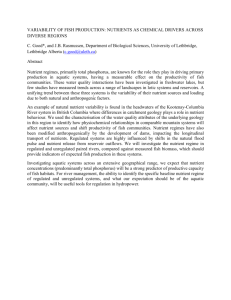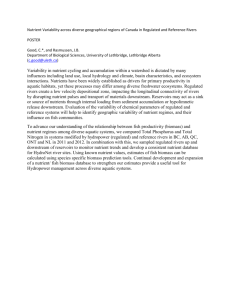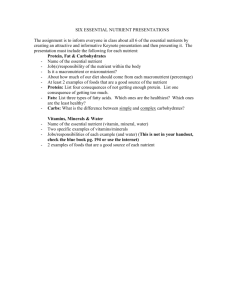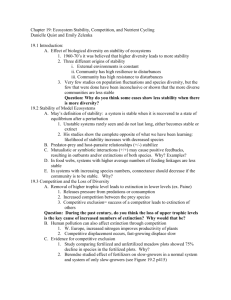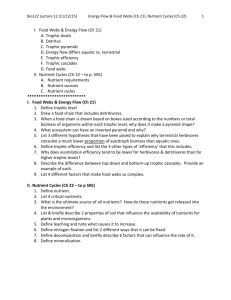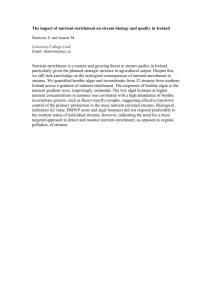Abstract - HydroNet
advertisement
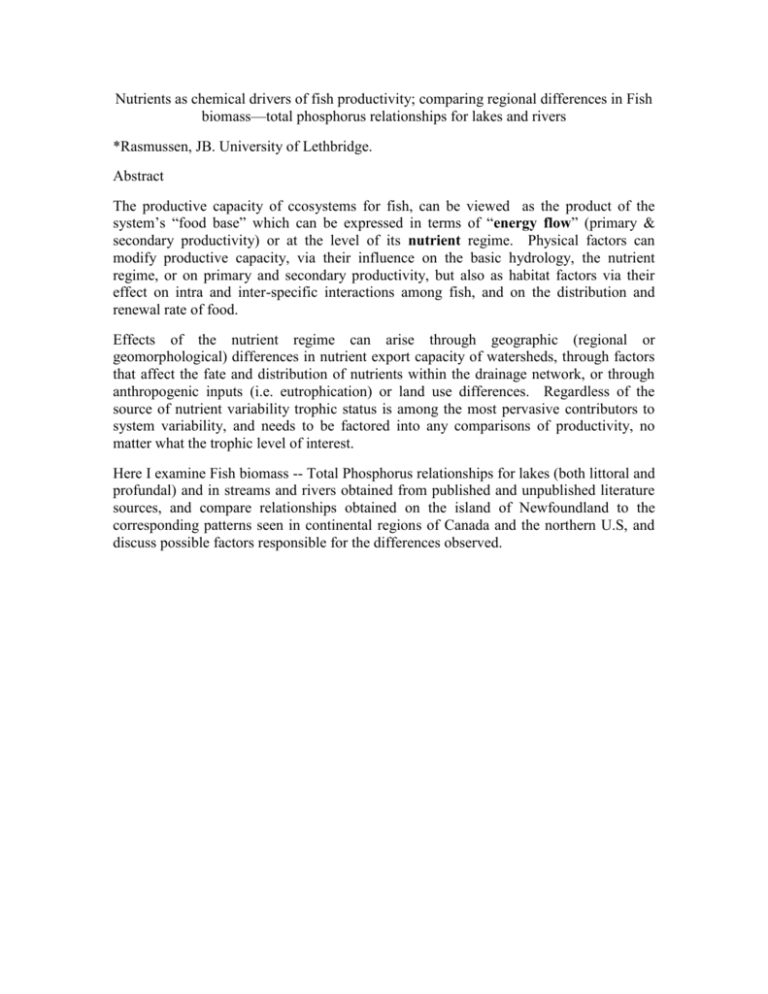
Nutrients as chemical drivers of fish productivity; comparing regional differences in Fish biomass—total phosphorus relationships for lakes and rivers *Rasmussen, JB. University of Lethbridge. Abstract The productive capacity of ccosystems for fish, can be viewed as the product of the system’s “food base” which can be expressed in terms of “energy flow” (primary & secondary productivity) or at the level of its nutrient regime. Physical factors can modify productive capacity, via their influence on the basic hydrology, the nutrient regime, or on primary and secondary productivity, but also as habitat factors via their effect on intra and inter-specific interactions among fish, and on the distribution and renewal rate of food. Effects of the nutrient regime can arise through geographic (regional or geomorphological) differences in nutrient export capacity of watersheds, through factors that affect the fate and distribution of nutrients within the drainage network, or through anthropogenic inputs (i.e. eutrophication) or land use differences. Regardless of the source of nutrient variability trophic status is among the most pervasive contributors to system variability, and needs to be factored into any comparisons of productivity, no matter what the trophic level of interest. Here I examine Fish biomass -- Total Phosphorus relationships for lakes (both littoral and profundal) and in streams and rivers obtained from published and unpublished literature sources, and compare relationships obtained on the island of Newfoundland to the corresponding patterns seen in continental regions of Canada and the northern U.S, and discuss possible factors responsible for the differences observed.

